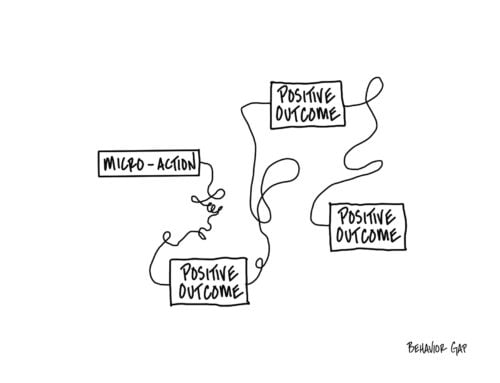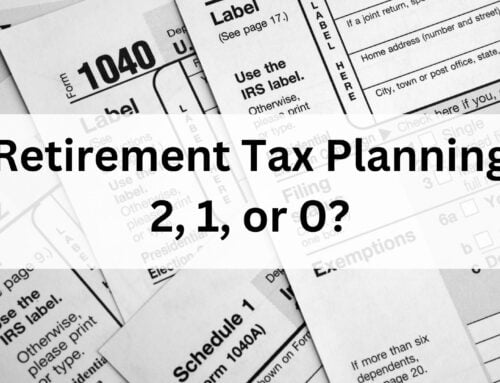The Co-Owner of Your Traditional 401K, IRA, & TSP Accounts
You may not realize it while you’re working to build your nest egg and enjoying the annual tax break, but your Traditional IRA, 401K, and TSP Accounts have a co-owner. It’s your uncle…Uncle Sam. Contributions made to these accounts are tax-deferred, meaning that you’ll eventually pay taxes on them. You’re uncle is happy to see them grow because that means he’ll get more money in the future. This article discusses how you can keep more of your money.
The Basics of Traditional IRAs, 401Ks, and TSP accounts
Traditional IRAs and 401Ks have been the foundation of retirement planning for many Americans for almost 50 years. TSP accounts are the primary retirement account for military and government employees. They offer a way to save with some immediate tax benefits. When you contribute to these accounts, your taxable income for the year decreases, providing an upfront tax break. However, this is a deferral, not an exemption. The taxes are simply postponed until you start withdrawing funds in retirement.
The Government’s Role in Your Retirement Funds
The government, in effect, has a deferred stake in your retirement funds. When you start taking money out of your Traditional IRA, 401K, or TSP, the withdrawals are taxed as ordinary income. The rate at which these withdrawals are taxed depends on your tax rate for the year. This deferral is a key feature of these accounts. But, without proper planning you could end up paying a higher percentage in taxes than you would have using other options.
Planning with Taxes in Mind
Strategic planning is the key to avoiding an oversized tax bill in retirement. The overall goal with Traditional accounts is to avoid taxes when your income is high and then withdrawal the funds when your income is lower. Classic tax rate arbitrage. While this is great in theory and can work for many retirees, there are challenges and pitfalls to avoid.
Potential Pitfalls
Pension income, Social Security, and other income
Military or other retirees with pension income and Social Security and other income from employment, a business, or rental income may find that their income doesn’t drop very much in retirement. This means they may end up still being in a relatively high tax bracket. This might eliminate the tax rate arbitrage.
Required Minimum Distributions (RMDs)
Your Uncle Sam eventually wants his money. While Congress has been slowly raising the age when you’re required to start taking money out of Traditional retirement accounts, you will eventually need to pay the piper. Current RMDs start when you turn 73, but if you’re born after 1958, they won’t be required until you turn 75.
RMDs at age 75 start at about 4% of your account balance. This gradually increases every year based on life expectancy hitting approximately 5% at age 80 and a full 10% of your balance at 93. These mandatory disbursements can be significant if you’ve got a large Traditional account balance. This additional income can drive you back into a higher tax bracket.
Medicare Income-Related Monthly Adjustment Amount (IRMAA)
Medicare charges for Part B and Part D increase based on your income. Elective distributions or RMDs from Traditional retirement accounts are regular income and can raise your Medicare premiums.
Widow’s Penalty
For married couples, when the first spouse dies the tax brackets are cut in half. Distributions and RMDs could easily drive the living spouse into a higher tax bracket and eliminate any tax bracket arbitrage you had planned.
Inheritance
If you intend to pass any remaining Traditional retirement accounts to your children, their tax bracket will also come into effect. For many older retirees, their children will be near their peak earning years when you die meaning they could be in a relatively high tax bracket. Because of the Secure Act, children who inherit IRAs will have to take distribution of all of the funds in the account within 10 years.
Summary
Have you been diligent in building a Traditional 401K, IRA, or TSP account? It’s like they say, a nice problem to have. It’s important that you be just as diligent in building the plan for how and when you’ll use that money to avoid over-paying taxes and eliminating the good deal that tax deferment is. There are options like Roth Conversions, Qualified Charitable Distributions, and other planning techniques. The key is thinking about them as early as possible, preferably while you’re accumulating, to make sure the Traditional account is the best place to save your next dollar.
Like this post, you’ll probably also like Retirement Check In – 10 Years Out
Want to talk about your Traditional Retirement Accounts, Roth Conversions, or some other financial topic? Schedule an introductory call with Mike (link).



